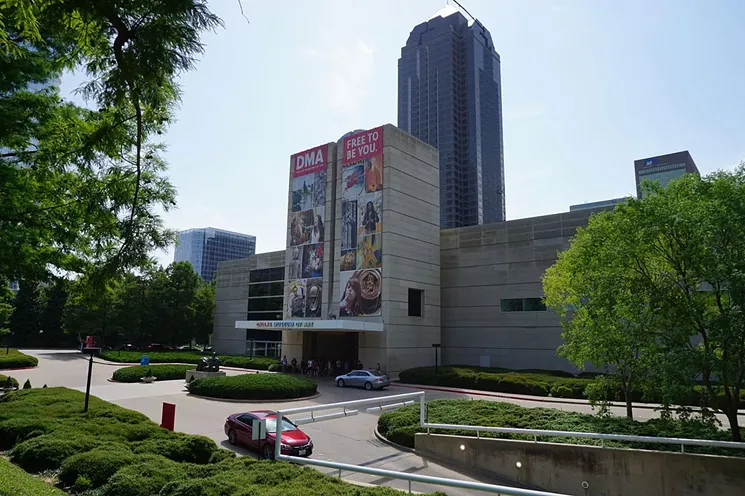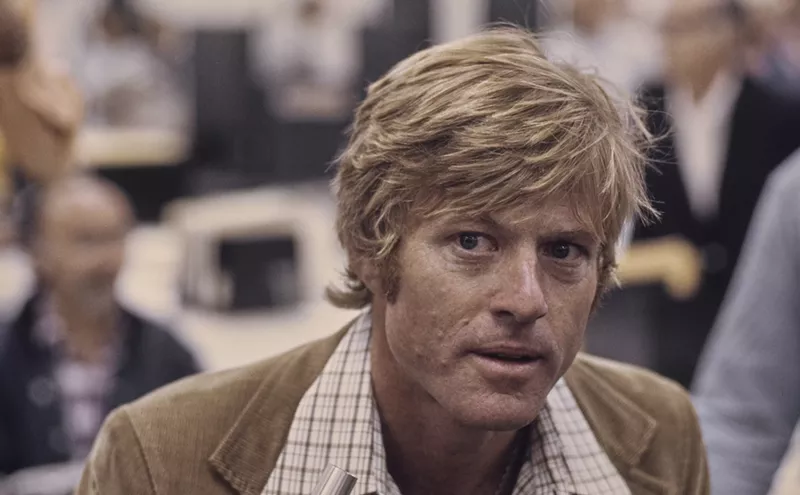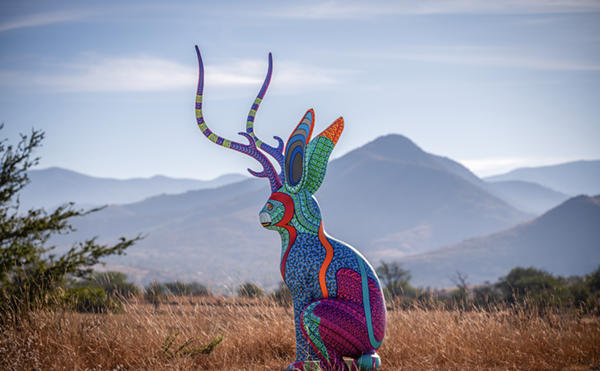
The Dallas Museum of Art's newest exhibitions are loaded with heavy themes.
Michael Barera / Wikimedia Commons
"Flores Mexicanas" is the name of a monumental painting depicting four young women in an idyllic landscape. Although it was kept in storage for more than 80 years at the Missouri Historical Society, the piece was recently unearthed and conserved. But how did it get there? In 1929, the then president of Mexico gave the 9-by-12-foot work of art to aviators Charles and Anne Lindbergh as a wedding present. Anne was the daughter of the American ambassador to Mexico, Dwight Morrow.
At the time, relations between the two countries were strained. One of the strategies applied by the Mexican government was cultural diplomacy, which started building connections, as Arteaga explained, that would still be relevant in the development of 20th century art in the United States.
Arteaga said this painting “will open the door to further studies about the relationships between Mexican and American artists.” The Lindberghs entrusted the painting to the Missouri Historical Society, where it languished until recently.
"Flores Mexicanas" was the last painting that Ramos Martinez did before he moved to California. Some experts claim it represents the four seasons, while others say it’s an allegory of modern womanhood in Mexico. What is certain is that “It inspired us to do a larger exhibition exploring the changing representation of women after the Mexican Revolution,” said Dr. Mark Castro, the DMA’s first Jorge Baldor curator of Latin American art.“It inspired us to do a larger exhibition exploring the changing representation of women after the Mexican Revolution.” — DMA's Mark Castro
tweet this
The themes addressed by the works of art included in the exhibition revolve around Mexican womanhood. Indigenous women depicted in rural scenes, women as community leaders and unifiers, or women as teachers are some examples. The latter also reflect the radical changes in women’s rights that took place in the 1920s and '30s, when women joined the workforce, albeit mainly as educators.
Some women artists shunned the roles and themes that were expected of them and created their own jobs and styles. Others, like Frida Kahlo, helped break new ground in art by addressing taboos, like the loss of a child. Some of Mexico’s most celebrated modernist artists, like Kahlo, María Izquierdo, Diego Rivera or David Alfaro Siqueiros, are represented in this exhibition. Flores Mexicanas: Women in Modern Mexican Art will run from Feb. 16 through Sept. 20.
The inspiration for the My|gration exhibition came from input from the community and visitors to the museum. Some of the exhibition's themes include migration and immigration as well as a preoccupation with the changes in immigration policies. Claire Moore, the Allen and Kelli Questrom Center for Creative Connections education director, said that My|gration “embodies our vision of placing art in the community at the center of our work.”
My|gration explores not only the migration of people, but also the objects and ideas in art that travel across borders.
“This exhibition is a cross-collection installation that signals what we really think about this topic,” says Moore, who adds that they integrated opportunities for people of all ages throughout the space, which means that multigenerational groups can visit it together instead of having separate spaces for young learners or adults.
The works of art selected were either donations made to the museum or contributions of artists who immigrated to the United States. The collection highlights the importance of the conversation about human migration, about the significance of Texas’ border with Mexico, the current political climate and the fact that 24% of Dallas residents were born in another country.
My|gration will be on view in the Center for Creative Connections C3 through Jan. 31, 2021.
The exhibition is divided in three. “Departures” examines the movement of people, whether forced or voluntary, across countries and how migration is expressed through art. Some of the works that reflect this theme are a pair of infant shoes circa 1100-1400 from Perú or a Hopi ceramic jar decorated with footprints.
“Arrivals” highlights the works of artists who immigrated to the U.S., with a section dedicated to those who settled in Texas, like Octavio Medellín or Yasuo Kuniyoshi.
“In Transit” reflects how intricately interconnected the world really is. The works of art represent the artistic exchange of motifs, materials, designs and techniques. For example, an Indonesian textile circa 1910 reinterprets a Chinese design of stylized clouds from the 18th century.
The Community Art Space invites visitors to reflect on a personal journey. Then, they can capture this reflection on different media in a participatory installation. A collaborative sound and performance project called "Moving Reflections" by Marie-Claire Valdez and Shoshana McIntosh is on display through May 31. A project by Nida Bangash will replace it from September to December.












